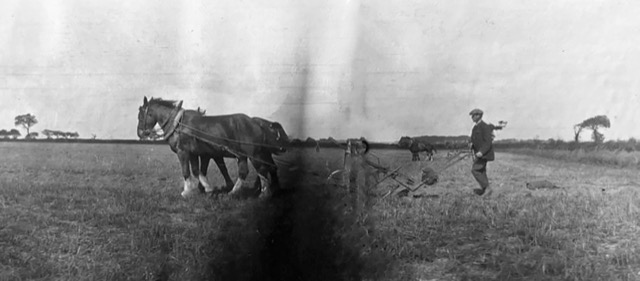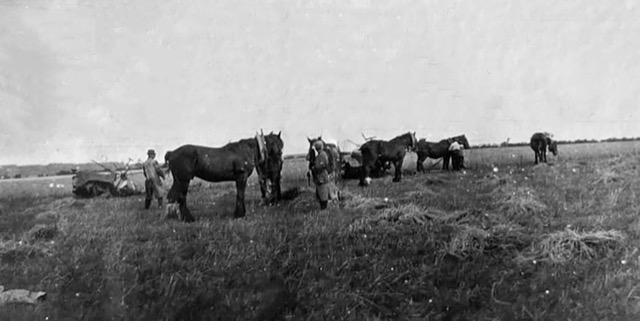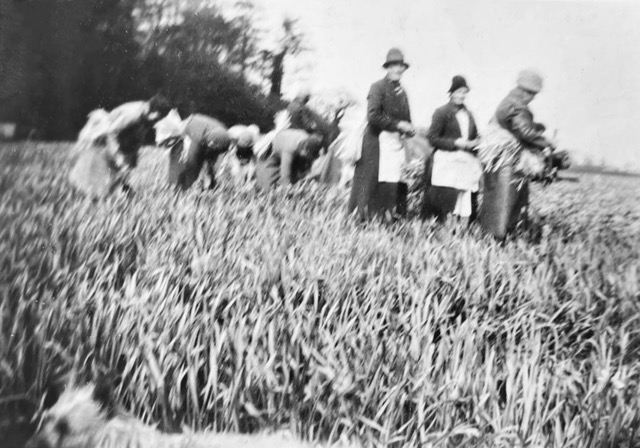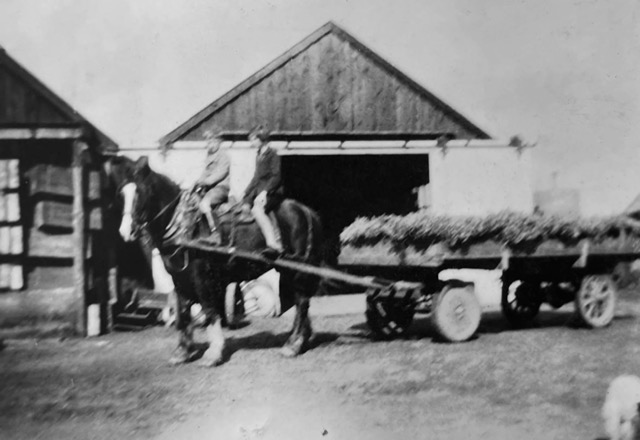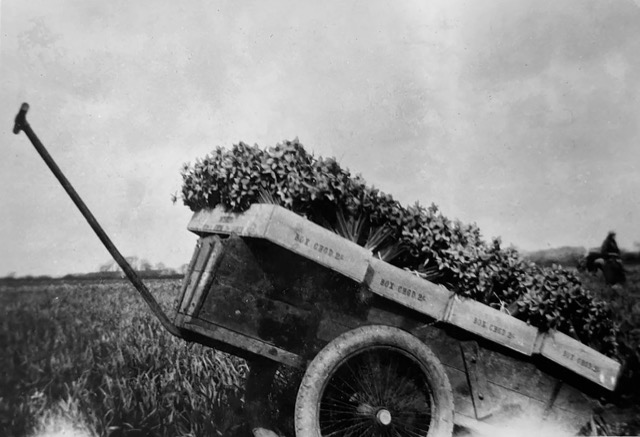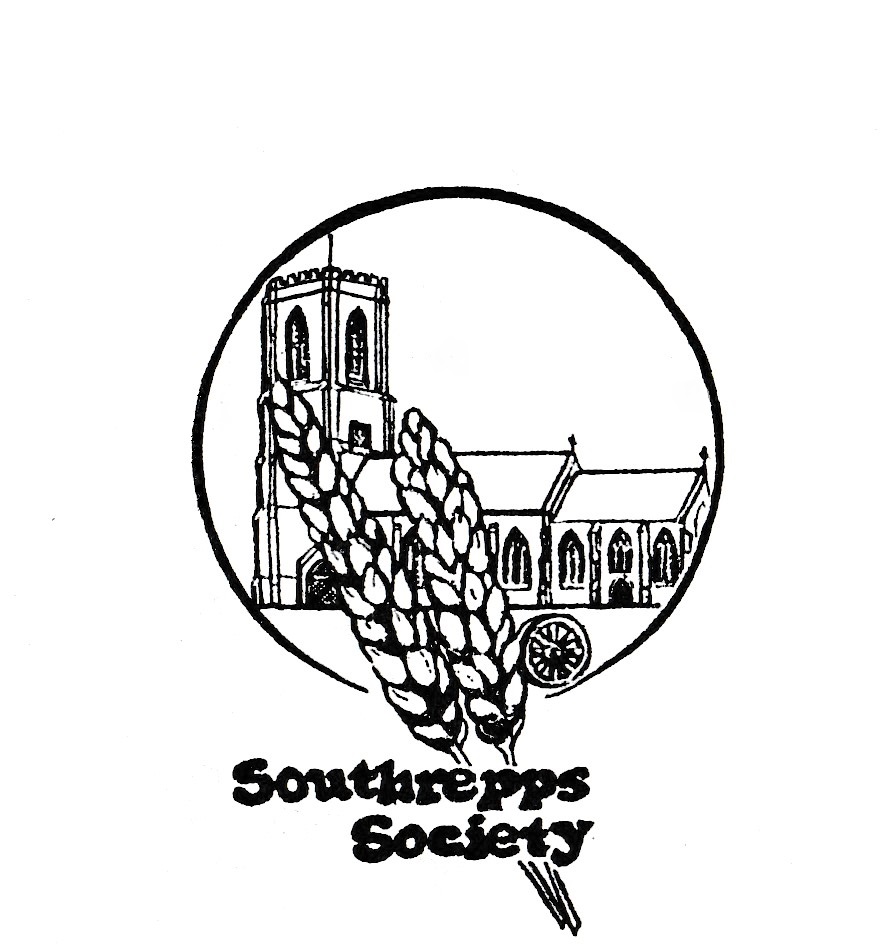Author Colin Needham
From the Southrepps Society Archive
Early Days William and Jemima
The Tylers (William and Jemima) were from Hackney in London where the family owned butcher/grocers shops. William Tyler (Senior)was born in 1838 and his occupation in 1881 is recorded as a butcher and it is presumed that his shop sold meat and dairy products. They had cowhouses (farms without fields) in Tottenham with over 100 cows hand milked by local people and fed on waste food and vegetables from Smithfield and other markets.
The Hackney Tylers had at least seven children, Jessie, Amie, Robert, Alice, Lizzie, William(Junior) and James.
Around 1890 William Tyler (Senior) took on the tenancy of Hall Farm. This farm was one of many on the Gunton Estate, a very large estate that included land and property across North Norfolk.
The sketch of the Hall shown below was made by Dolphin in 1837.
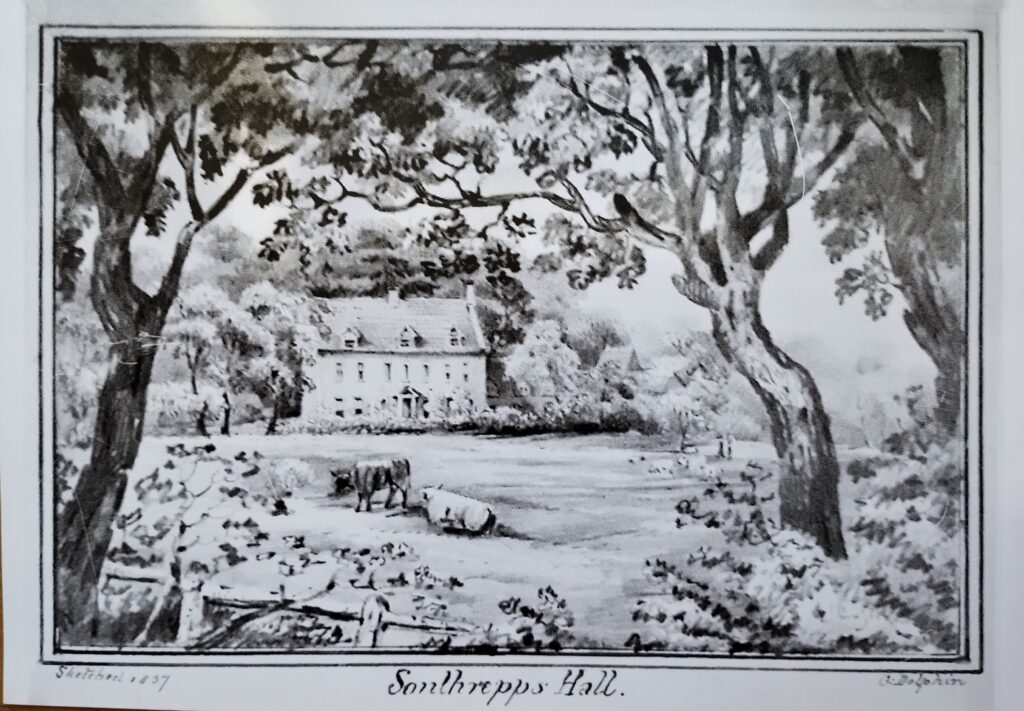
William, over time, moved his family to Southrepps. His brother Robert continued the butchers business in Hackney. Robert died aged only 37 in 1907 and his death may have ended the Hackney business.
William Tyler(Senior) died in 1906 and is buried in Southrepps Churchyard.
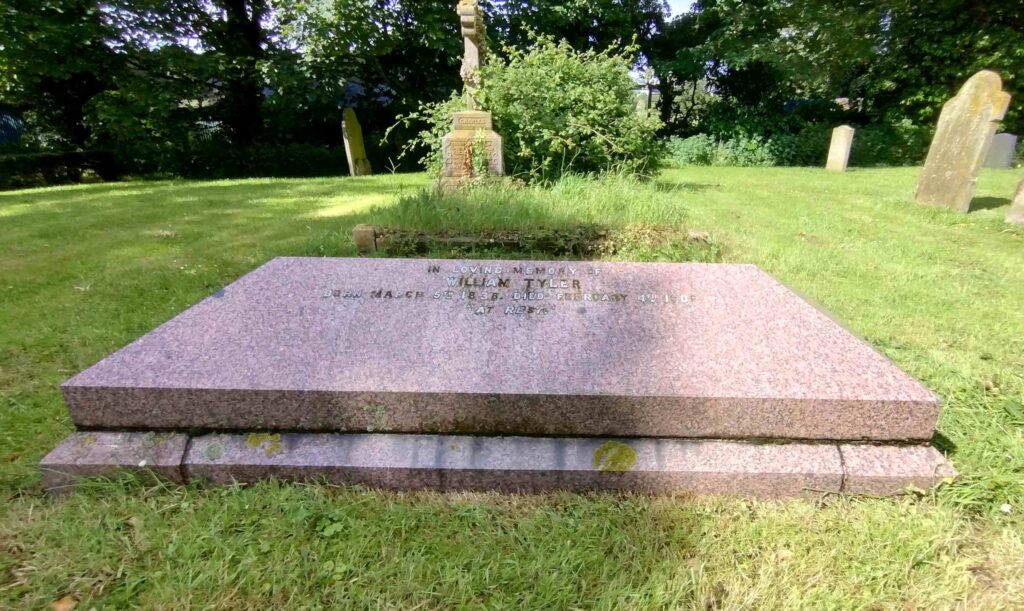
JemimaTyler and Tyler Brothers Limited
(James Tyler and William Tyler Junior)
Census records show that by 1911, the widow Jemima Tyler described herself as a Farmer and head of the household at Southrepps Hall Farm and her two sons James and William were both Farmers at the Hall. The activities on the farm included arable and livestock husbandry together with an intensive retail and wholesale horticultural business employing many seasonal workers from Southrepps and the surrounding villages.
Before and after the First World War much of the Gunton Estate was sold off by auction including Hall Farm and the Tylers purchased the freehold of the farm including the Hall.
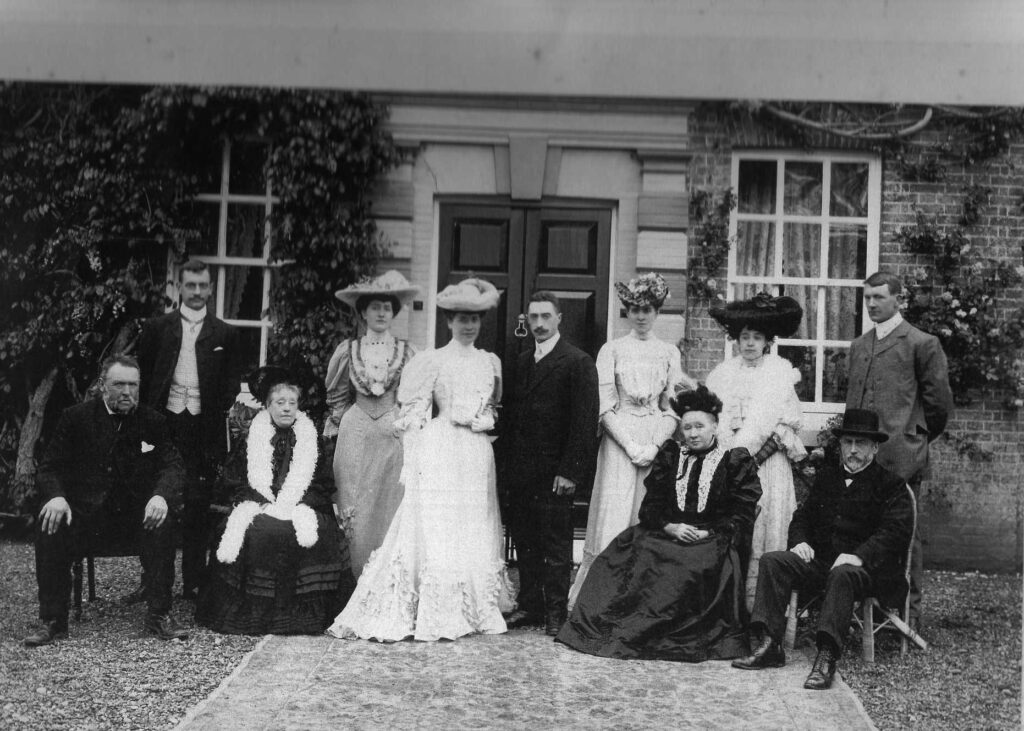
Hall Farm was a short distance from Gunton railway station and produce from the farm could be speedily transported to London and other wholesale markets.
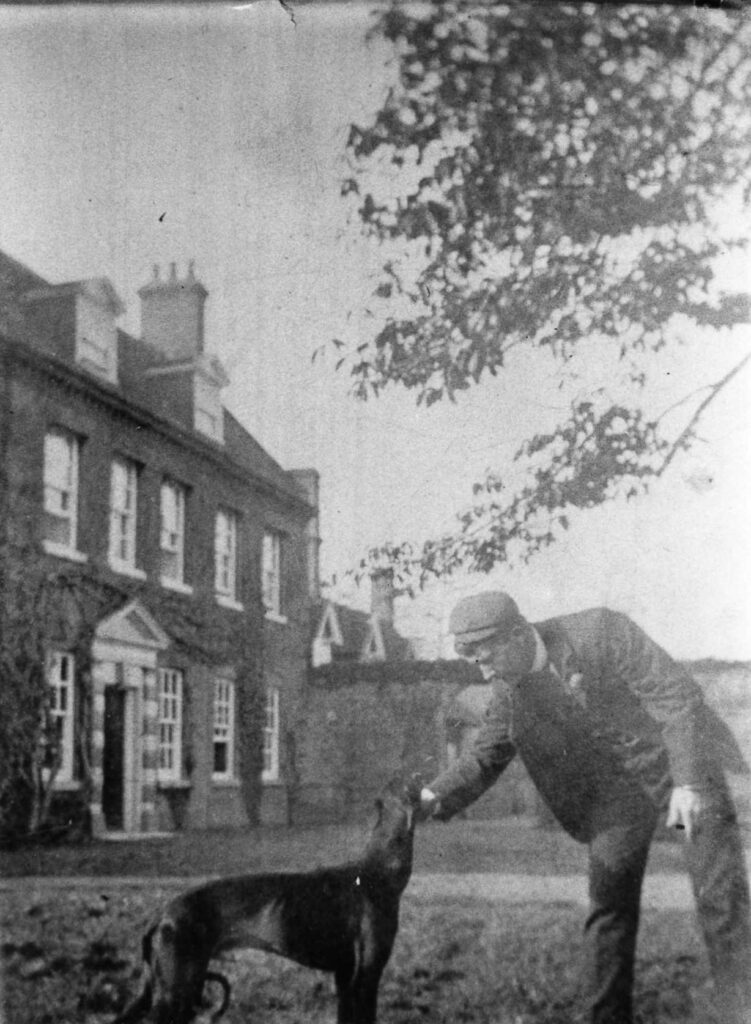
The original farm was centred around Southrepps Hall but it also included land in Thorpe Market village and land off Topshill Road. Sheds and large greenhouses were built and a borehole and reservoir provided water for irrigation.
The farm, unusually for this part of Norfolk, specialised in growing horticultural produce for London shops and the local hotel market. A significant part of the business was the very large scale open field rearing of ducks for meat. The ducks were a profitable but just as importantly, the large flocks were part of the crop rotation, fertilising the soil. Each year about 30 acres of ground were grazed by the ducks and then ploughed and planted with potatoes.
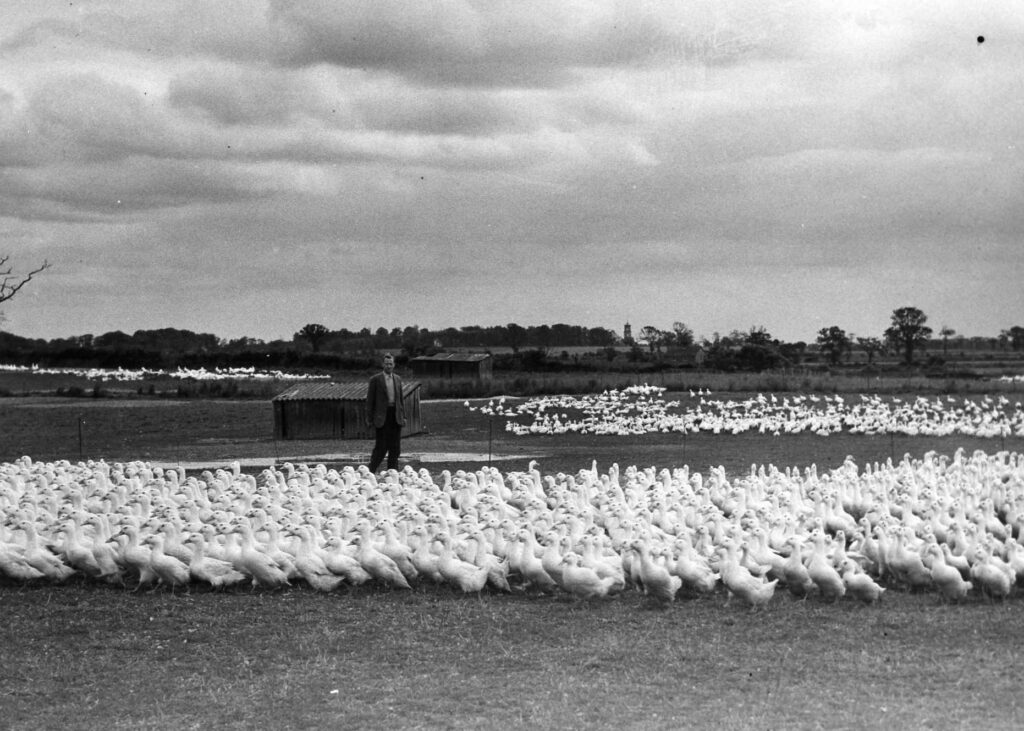
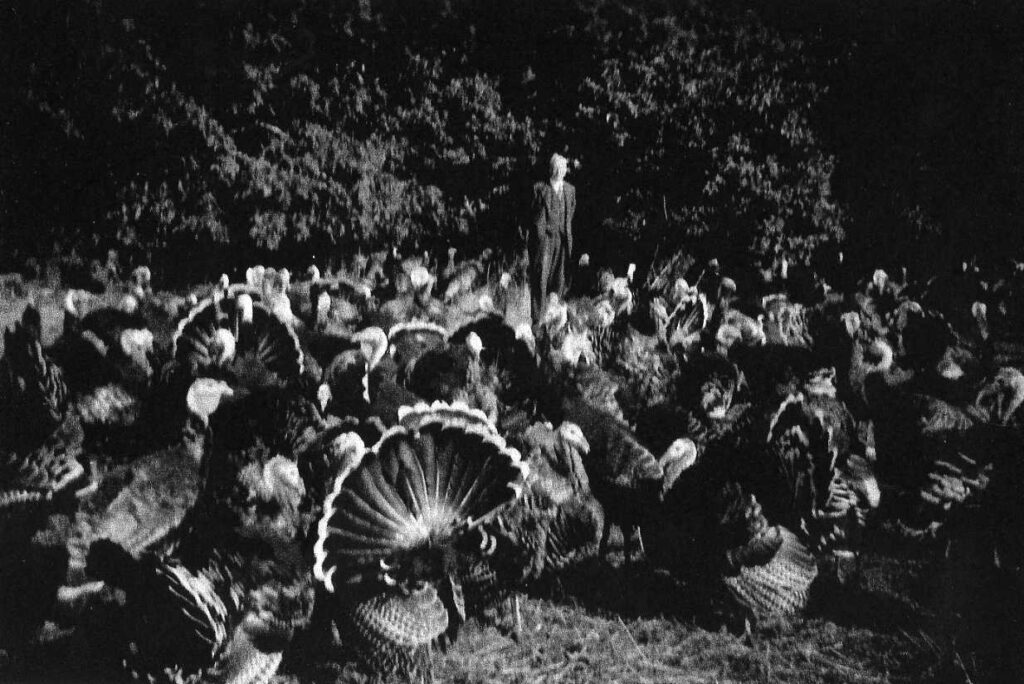
On the death of Jemima Tyler in 1920 the farm traded as Tyler Brothers (Southrepps) Limited. William(Junior) had served in WW1 and was discharged injured in 1918. James Tyler married Grace Dorothy Page in 1920. Grace’s family were nurserymen and flower growers supplying the London markets from their business in Hampton, Middlesex . In the 1921 census records James and his wife and baby son together with his unmarried brother William (Junior) and his sister Jessie and his mother in law, Alice Page family were living at Hall Farm. Jessie never married and later lived in Northrepps. She died in 1966 and was buried with the family in Southrepps.
Grace and James had three children. Grace died young in 1929 leaving three children without a mother and James subsequently married Ada Gertude Sibley. James died in 1937 aged 56 leaving the management of the business to his brother William (Junior) . By this time the house at Hall Farm had fallen into disrepair and William commissioned the building of Brevik House on the Cromer Road. In 1923 William had married Wanda Scheel Peterson whose Norwegian family had interests in shipping based in West Hartlepool. Brevik is Norwegian in origin, possibly the name of a small port now regarded as one of the best preserved towns from the sailing ship era. They had one son, Peter Scheel Tyler.
In 1939 William and Wanda are recorded as living at Brevik House with their son Peter together with war time evacuees William James, John Barber, Kenneth Hake and Roy King together with their teacher Gilbert Skinner and his wife Thelma.
As well as cattle, pigs, ducks, corn and potatoes, the farm produced tons of rhubarb, flowers, and soft fruit. Hall Farm was at one time one of the largest producers of blackcurrants in the county. The farms employed dozens of men and women from Southrepps and the surrounding villages who worked on the fields, in the large greenhouses, and tending stock. There were duck breeding pens on the Lower Street Common.
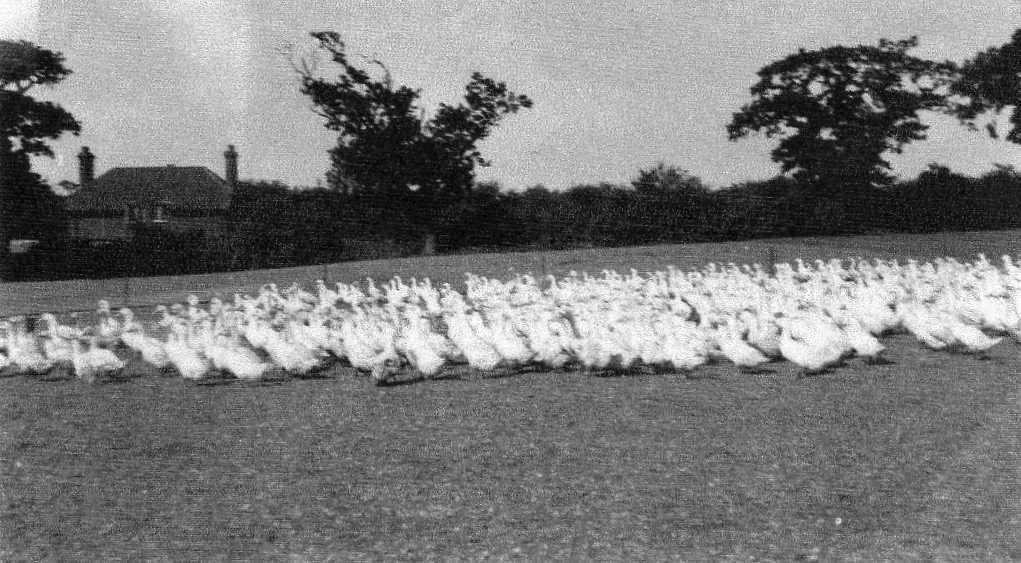
Trade directories list the Tyler Brothers business as Farmers, Fruit and Flower Growers, Coal Merchants and Poultry Purveyors.
The Hall was occupied at various times by farm workers but was ultimately abandoned and became derelict. The ground floor was used for the storage of animal fodder and during the war troops were billeted in some of the buildings. The Hall was eventually sold in 1950 to Mr & Mrs A Colman. They restored the property and lived there for a number of years until it was sold on. The house was subsequently purchased in 1979 by Peter Sladden.
William (Junior) died in 1956 at Brevik House and is buried at Southrepps Church. His wife Wanda died in 1963.
Peter Tyler
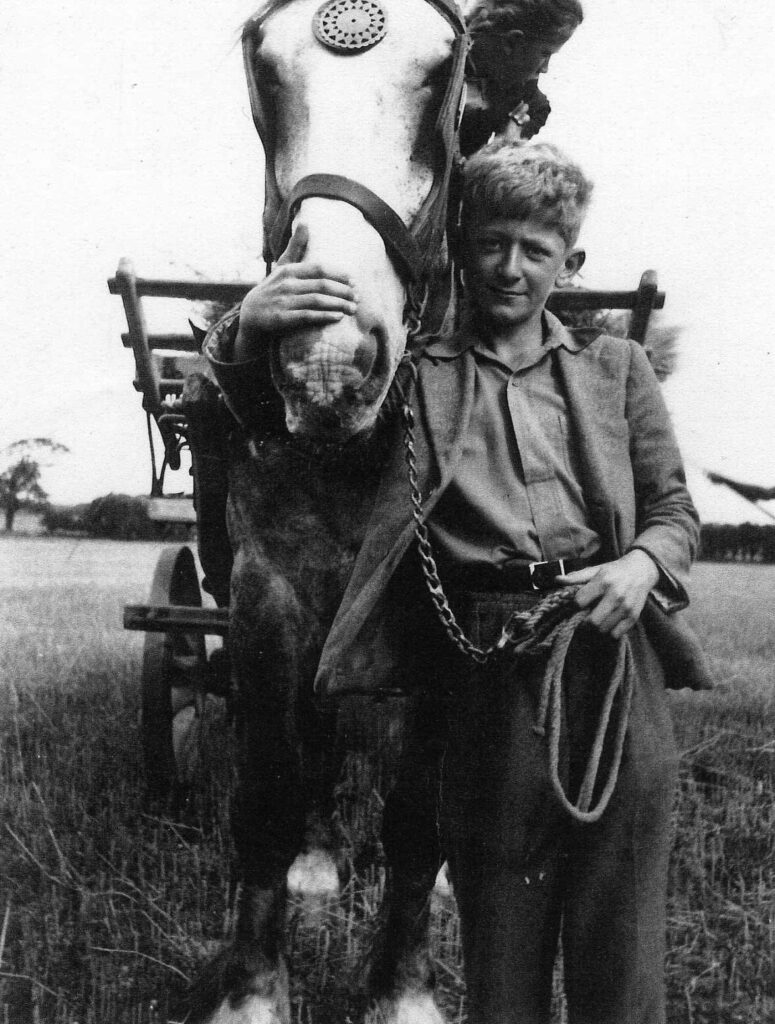
Peter Tyler married Rosalind Machin in 1951. They had met when both were at agricultural college. They lived in the bungalow on Hall Road opposite the Hall, now the home of Emms stems. Peter Tyler managed Tyler Brothers Limited . Peter was a prize winning pig breeder and his farm was equipped with the best of buildings and equipment.
In the hands of Peter Tyler it became a splendid example of how to dovetail a variety of farming operations into an efficient farming unit. Under his leadership the farm was split into four main units: the rearing and marketing of ducks, the breeding and fattening of pedigree pigs, the growing of strawberries, blackcurrants and rhubarb and the production of arable crops.
In the 1960s the size was 265 acres. The farm produced over 200 tons of rhubarb each year, all picked by part-time women from the surrounding villages. Strawberries were contract grown for Chivers and the farm produced many tons of blackcurrants each year for processing locally.
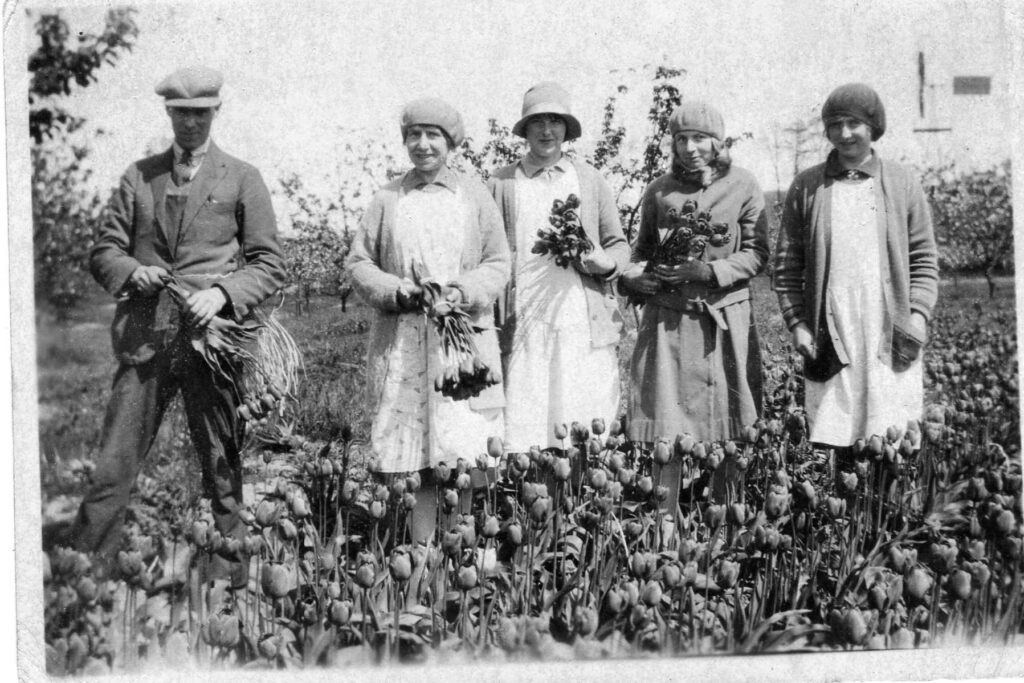
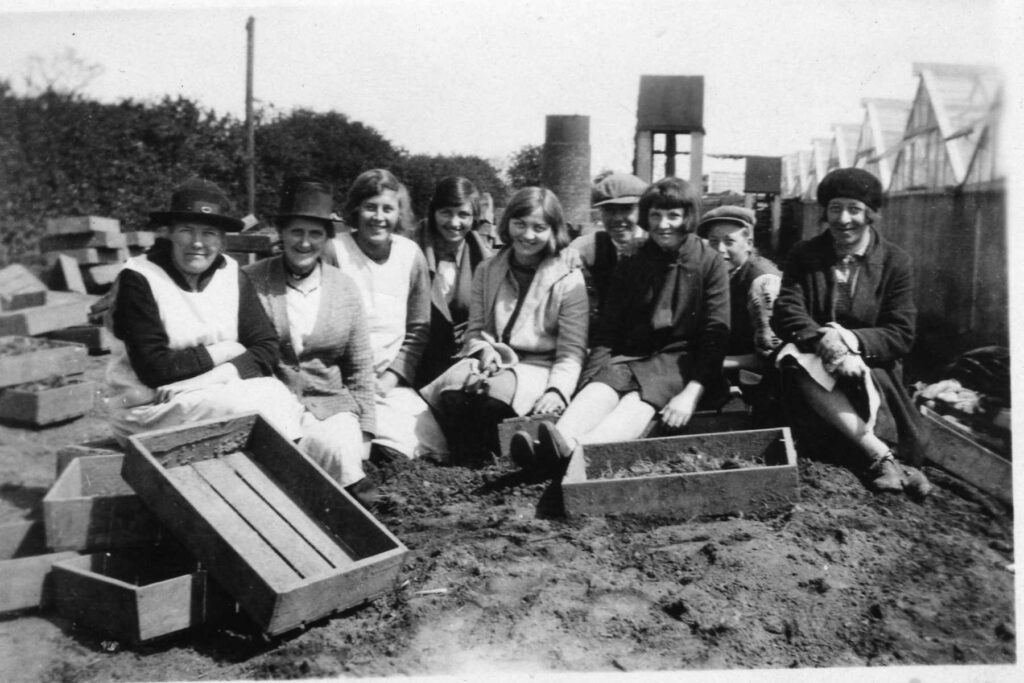
At any one time there were 10,000 ducks on the farm at various stages of growth. Eggs collected from the breeding stock were hatched on the farm and the kept in sheds for three weeks before going onto the grass fields. Between 1000 and 1500 ducks were killed, plucked and packed for dispatch throughout the year.
The pig unit was established in 1958. Pedigree pigs were bred on the farm from a rotating stock of 50 sows. The unit produced up to 500 fat pigs for bacon every year as well as pedigree stock for sale to other pig farms.
Peter Tyler was a founder member of United Pig Breeders Ltd. He was an expert in state of the art pig rearing, and commercial pigs from the Southrepps farm were prize winners at county and national Shows.
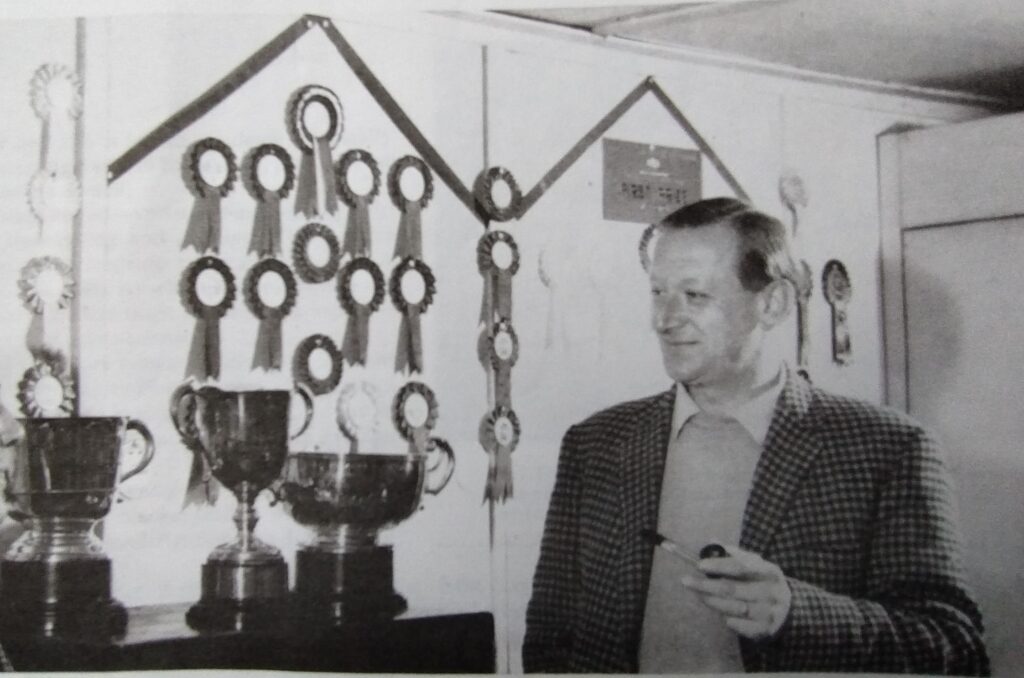
During Peter Tyler’s tenure , Hill Farm (or the “Golden Apple Orchard” ) between Thorpe Market and Roughton was added to the estate . Hill Farm was a fruit farm with an extensive acreage of mainly apple trees. The family moved out of Brevik house and moved into the Hill Farmhouse which was renamed The Cedars.
Peter Tyler was an active member of the community in Southrepps and he was an energetic supporter of village events. He was a prime mover and Chairman of the fund raising committee for the new village hall.
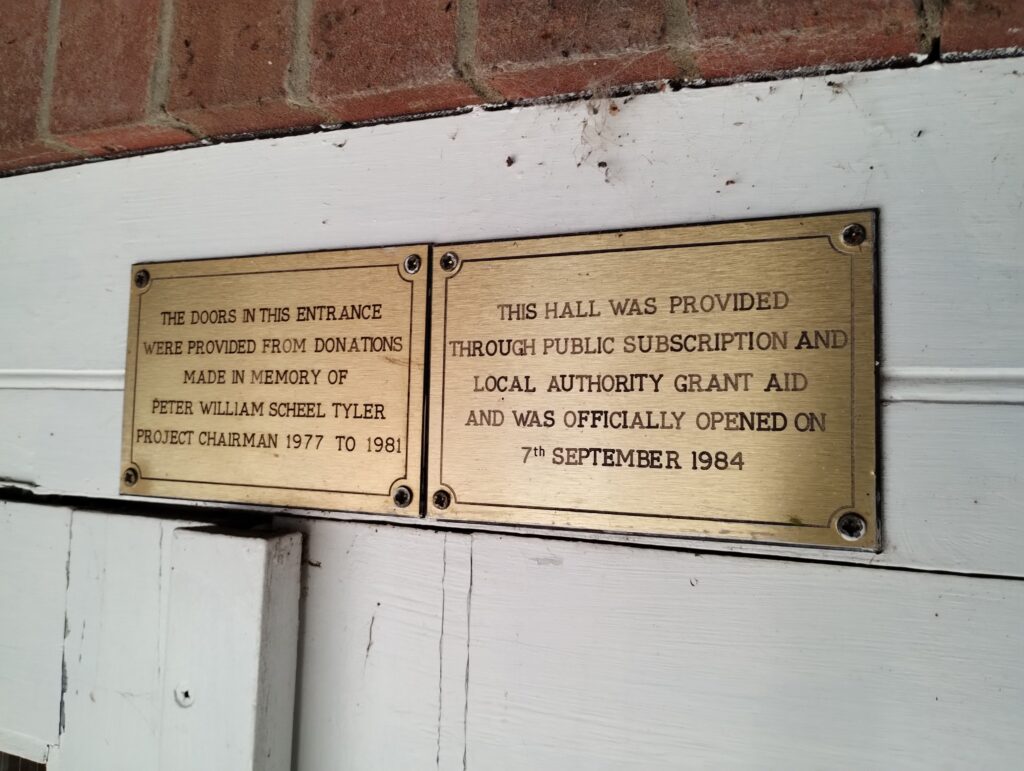
His untimely death in 1981 at The Cedars, before the completion of the Village Hall was a great loss locally and to the wider farming community. Rosalind built a new house for herself, Cedar Cottage in the farm yard of the Cedars.
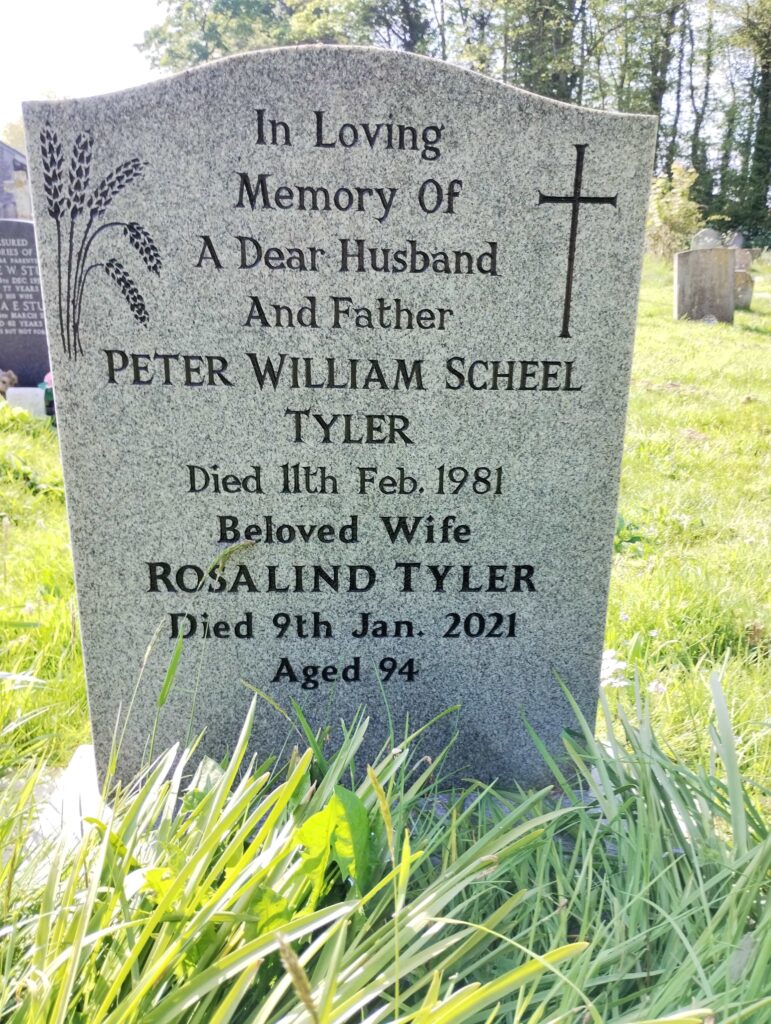
On the death of Peter Tyler, the farm and the apple orchards were managed for a few years by his wife Rosalind and son-in-law Mark Webster . Tyler Brothers (Southrepps) Limited was liquidated in 1986.
The land around the Hall was subsequently acquired by Peter Sladden re-uniting the house with its lands. Hill Farm at Roughton was acquired by EW Filby of Grove Farm Felbrigg . They started the Groveland Farm Shop.
